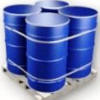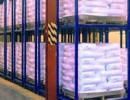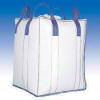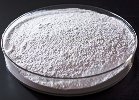| Aadhunik Industries is a manufacturing group company. Aadhunik Industries is pioneer manufacturers of Specialty Chemicals, Pharmaceutical Excipients, Food Fragrance & Flavor chemicals in India. It has toll manufacturers and representatives in UAE, Europe, Canada & USA and agents & customers in all countries like USA, Canada, Europe, UAE Dubai, South Africa, Tanzania, Kenya, Egypt, Nigeria, Uganda, Turkey, Mexico, Brazil, Chile, Argentina, Malaysia, Indonesia, Thailand, Korea, Japan, etc. Halal & Kosher certified Povidone or Polyvinylpyrrolidone and Povidone-Iodine or PVP-I or Poly(vinylpyrrolidone)–Iodine complex Manufacturers made in a FDA-GMP-GLP plant is offered. |
| The units have one or more of the certifications like FDA GMP, ISO 9001, ISO 22000, HACCP, REACH, Kosher & Halal and DMF support is available. |




Povidone or Polyvinylpyrrolidone SDS MSDS Sheet of Manufacturers
Povidone or Polyvinylpyrrolidone BP Ph Eur Grade manufacturers.
Povidone or Polyvinylpyrrolidone USP Grade manufacturers.
Povidone or Polyvinylpyrrolidone FCC Food Grade manufacturers.
Polyvinylpyrrolidone, Povidone SDS, Safety Data Sheet
MSDS Sheet, Material Safety Data Sheet
1. PRODUCT DESCRIPTION
Product Name: Polyvinylpyrrolidone
Synonyms: PVP, Povidone
CAS Number: 9003-39-8
EINECS EC Number: -
Molecular Weight: -
Molecular Formula: (C6H9NO)n
2. HAZARD IDENTIFICATION
GHS, Globally Harmonized System Classification in accordance with 29 CFR 1910
Hazard Class and Category Code(s), Regulation (EC) No 1272/2008 (CLP)
Not a hazardous substance or mixture according to Regulation (EC) No. 1272/2008.
This substance is not classified as dangerous according to Directive 67/548/EEC.
Labeling as per GHS & Regulation EC 1272/2008 (CLP) & GHS
GHS Label Elements None |
Signal Words: None
Hazards not otherwise classified (HNOC):
May causes mild skin irritation.
May causes mild eye irritation, if exposed in large quantity.
Precautionary statements:
P261: Avoid breathing dust/fume/gas/mist/vapors/spray.
P262: Do not get in eyes, on skin, or on clothing.
P281: Use personal protective equipment as required.
P302+P352 - IF ON SKIN: Wash with plenty of soap and water.
P303+P361+P353 - IF ON SKIN (or hair): Remove/Take off immediately all contaminated clothing. Rinse skin with water/shower.
P304 + P340 - IF INHALED: Remove victim to fresh air and keep at rest in a position comfortable for breathing.
P305 + P351 + P338 - IF IN EYES: Rinse cautiously with water for several minutes. Remove contact lenses, if present and easy to do. Continue rinsing.
P337+313: If eye irritation persists get medical advice/attention.
3. COMPOSITION/INFORMATION ON INGREDIENTS
Product Name: Polyvinylpyrrolidone
Synonyms: PVP, Povidone
CAS Number: 9003-39-8
4. FIRST AID MEASURES
Always get medical attention after the first aid is over.
Emergency and First Aid Procedures:
Eyes - Flush with water for at least 15 minutes, raising and lowering eyelids occasionally. Get medical attention if irritation persists.
Skin - Thoroughly wash exposed area for at least 15 minutes. Remove contaminated clothing. Launder contaminated clothing before reuse. Get medical attention if irritation persists.
Ingestion - If swallowed, if conscious, give plenty of water. Immediately call a physician. Never give anything by mouth to an unconscious person.
Inhalation - Remove to fresh air. Give oxygen if breathing is difficult; give artificial respiration if breathing has stopped. Get medical attention.
Notes to Physician - Treat symptomatically
5. FIREFIGHTING PROCEDURES
Flash Point: No information available.
Autoignition Temperature: No information available.
Extinguisher Media: Use media suitable to extinguish surrounding fire. Use water spray, alcohol-resistant foam, dry chemical or carbon dioxide.
Flammable Limits in Air % by Volume: N/A
Special hazards arising from the substance or mixture: Carbon oxides, Nitrogen oxides (NOx) and fumes.
Special Fire fighting Procedures: Firefighters should wear full protective equipment and NIOSH approved self-contained breathing apparatus.
6. SPILL OR LEAK PROCEDURES
Steps to be taken in Case if Released or Spilled:
Ensure adequate ventilation. Avoid dust formation. Avoid breathing vapors, mist or gas. Ventilate area of leak or spill. Wear appropriate personal protective equipment.
Sweep up and containerize for reclamation or disposal. Vacuuming or wet sweeping may be used to avoid dust dispersal. Do not let product enter drains. Small amounts of residue may be flushed to sewer with plenty of water.
7. SPECIAL PRECAUTIONS
Wear personal protective equipment. Ensure adequate ventilation. Avoid contact with skin, eyes and clothing. Avoid ingestion and inhalation. Avoid dust formation. Wash hands before breaks and immediately after handling the product.Keep in a well closed container stored under cold to warm conditions, in a ventilated area. Protect against physical damage. Containers of this material may be hazardous when empty since they retain product residues (dust, solids); observe all warnings and precautions listed.
8. SPECIAL PROTECTION INFORMATION
Exposure Guidelines: This product does not contain any hazardous materials with occupational exposure
limits established by the region specific regulatory bodies.
Respiratory Protection (Specify Type): None needed under normal conditions of use with adequate ventilation. NIOSH approved equipment should be worn if PELs are exceeded.
Ventilation Local Exhaust: Yes
Eye Protection: Splash proof chemical safety goggles should be worn at all times.
Other Protective Clothing or Equipment: Lab apron, eye wash, and safety shower.
9. PHYSICAL DATA
Molecular Weight: -
Molecular Formula: (C6H9NO)n
Appearance and Odor: Solid beige powder. Odor not defined.
pH: 5-8 at 10% water solution.
Melting Point: NA
Boiling Point: NA
Density: NA
Percent Volatile by Volume: No data.
Evaporation Rate(H2O=1): No data.
Solubility in Water: No data.
10. REACTIVITY DATA
Stability: It is stable
Conditions to Avoid: Heat, humidity, Dust generation.
Incompatibility (Materials to Avoid): Strong oxidizing and reducing agents, Strong acids and bases.
Hazardous Decomposition Products: Carbon monoxide, carbon dioxide, nitrogen oxides, fumes.
Hazardous Polymerization: Will not occur
11. TOXICITY DATA
Acute toxicity:
LD50 Oral - rat - > 100,000 mg/kg
Carcinogenicity: This product present at levels greater than or equal to 0.1% is identified as probable, possible or confirmed human carcinogen by IARC, NTP, ACGIH & OSHA.
Mutagenic Effects: No information available
Reproductive Effects: No information available.
Developmental Effects: No information available.
Teratogenicity: No information available.
Other Adverse Effects: The toxicological properties have not been fully investigated.
12. ECOLOGICAL DATA
Toxicity to fish: LC50 >1000mg/liter over 48 hours exposure on killfish.
Toxicity: Avoid release into the environment. Runoff from fire control or dilution water may cause pollution.
Persistence and Degradability: Soluble in water Persistence is unlikely based on information available.
Bioaccumulation/ Accumulation: No information available.
Mobility: Will likely be mobile in the environment due to its water solubility.
EPA Waste Numbers: None
13. DISPOSAL INFORMATION
Waste Disposal Methods: Dispose in accordance with all applicable Federal, State and Local regulations.
14. TRANSPORT INFORMATION
DOT & ADR/RID: Not regulated.
IMDG: Not regulated.
IATA: Not regulated.
15. REGULATORY INFORMATION
USA:
Section 355 (extremely hazardous substances): Not listed.
Section 313 (Specific toxic chemical listings): Not listed.
California Proposition 65: Not listed.
16. ADDITIONAL INFORMATION
DISCLAIMER: The information and recommendations set forth herein (hereinafter "Information") are presented in good faith and believed correct as of the date hereof. It is compiled from various sources and it is not necessarily all inclusive nor fully adequate in every circumstance. In addition, these suggestions should not be confused with nor followed in violation of applicable laws, regulations, rules or insurance requirements applicable. This MSDS sheet is intended only as a guide to the appropriate precautionary handling of the material by a properly trained person using this product. Individuals receiving the information must exercise their independent judgment in determining its appropriateness for a particular purpose.
Povidone or Polyvinylpyrrolidone BP Ph Eur USP FCC Food Grade Manufacturers
Aadhunik Industries
Ankleshwar Gujarat &, Mumbai, India
TEL: (OFFICE) 91-22-23774610, 23723564.
e-mail: info@aadhunikindustries.com

Exports to USA, Canada, UAE, Dubai, South Africa, Tanzania, Kenya, Nigeria, Egypt, Uganda, Turkey, Mexico, Brazil, Chile, Argentina, Europe Netherlands, Italy, Spain, Germany, Portugal, France, Malaysia, Indonesia, Thailand, Vietnam, Korea, Japan, etc.
Copyright and Usual Disclaimer is Applicable February 5, 2022